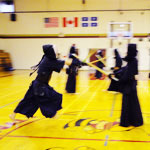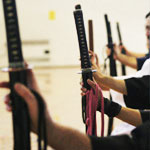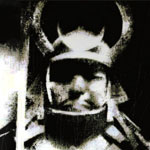The Samurai
Samurai (侍) is the term for the military nobility of pre-industrial Japan. According to translator William Scott Wilson: "In Chinese, the character 侍 was originally a verb meaning to wait upon or accompany a person in the upper ranks of society, and this is also true of the original term in Japanese, saburau. In both countries the terms were nominalized to mean "those who serve in close attendance to the nobility," the pronunciation in Japanese changing to saburai." According to Wilson, an early reference to the word "samurai" appears in the Kokin Wakashū (905–914), the first imperial anthology of poems, completed in the first part of the 9th century.
By the end of the 12th century, samurai became almost entirely synonymous with bushi (武士), and the word was closely associated with the middle and upper echelons of the warrior class. The samurai followed a set of rules that came to be known as Bushidō. While they numbered less than 10% of Japan's population samurai teachings can still be found today in both everyday life and in martial arts such as Kendō, meaning the way of the sword.
Full documentation
The Way of the Samurai
Tokugawa Ieyasu unifies Japan and establishes a dynasty that will rule Japan for over 250 years.
Coroner's Report: Seppuku
Seppuku was a ritual form of suicide used by samurai warriors to avoid surrender or atone for a shameful act.
Often called “hara-kiri” in the West, “seppuku” is a form of ritual suicide that originated with Japan’s ancient samurai warrior class.
The grisly act typically involved stabbing oneself in the belly with a short sword, slicing open the stomach and then turning the blade upwards to ensure a fatal wound.
Some practitioners of seppuku allowed themselves to die slowly, but they usually enlisted the help of a “kaishakunin,” or second, who would lop off their head with a katana as soon as they made their initial cut. The entire process was accompanied by great ceremony. Among other rituals, the doomed individual often drank sake and composed a short “death poem” before taking up the blade.
Seppuku first developed in the 12th century as a means for samurai to achieve an honorable death. Swordsmen performed the ritual to avoid capture following battlefield defeats, but it also functioned as a means of protest and a way of expressing grief over the death of a revered leader. More information.
More about the Samurai :



 tkkim@hotmail.com
tkkim@hotmail.com











